Click to Skip Ahead
If you’ve just invested in a beautiful new couch, seeing your cat raking their claws down the side can be a little horrifying. Scratching is an instinctive behavior for cats, so you’ll never be able to stop your cat from scratching. What you can do, however, is redirect their behavior to something other than your couch!
There are a few ways to stop your cat from scratching your couch or any other piece of furniture. But first, it makes sense to figure out exactly why your cat is carrying out this behavior. That way, you can tailor your solution to meet their needs, which should equal success!

Why Does My Cat Scratch the Couch?
- To stretch their muscles. We all know how good a nice stretch feels, and it’s the same for our cats. Scratching can occur when your cat holds onto your couch’s arm with their claws as they lean into a nice, deep stretch. Cats release tension from their bodies when they stretch.
- To mark their territory. The paws of a cat contain scent glands, which release pheromones as your cat places their paws on a surface. So, as they scratch, your cat’s scent is left behind. This helps your cat mark their territory, which is particularly important for cats in a multi-cat household. Leaving their pheromones on familiar objects helps cats feel secure and safe in their home environment.
- To clean their claws. Cats love to scratch to remove the old, dead layer of their claws to reveal a shiny new set underneath!
- To feel good. Scratching and stretching simply feel good to cats and help them relieve stress.
How Can I Stop My Cat from Scratching My Couch?
It’s essential that cats have somewhere to scratch since it’s an instinct that they can’t control. Take a good look around your house. Have you provided your cat with other surfaces to scratch on? If not, the couch is probably their only option!
We recommend a two-pronged approach to prevent your couch from getting scratched, which includes:
- Offering your cat a variety of other surfaces to scratch on
- Making the couch a less desirable place to scratch
It’s essential to deal with the first step because without providing an alternative surface, your cat will still use the couch, even if you make it less attractive to your cat. Let’s take a closer look.
1. Offering Your Cat a Variety of Other Surfaces to Scratch On
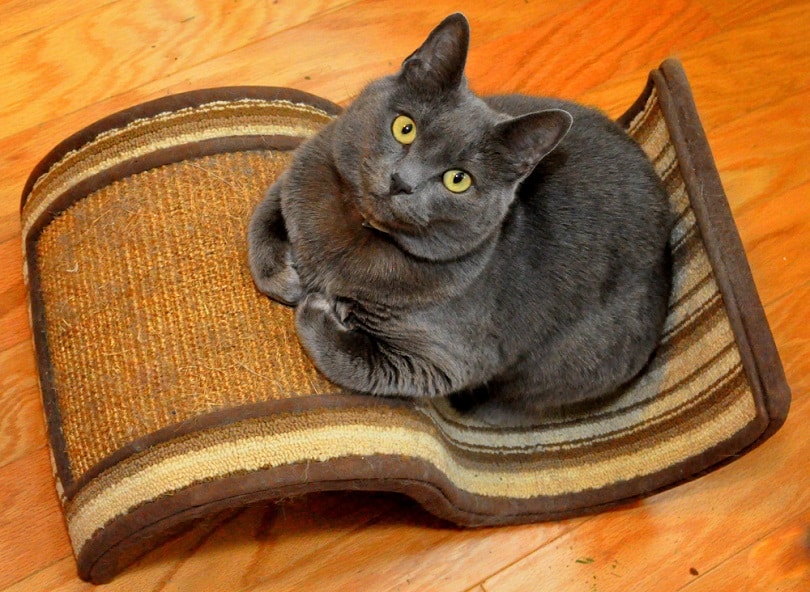
Scratching is an instinct. Your cat is always going to want to scratch, no matter what. The key is providing surfaces that you don’t mind them scratching!
Adding scratching posts and making them more appealing than your couch is the way to go. We recommend:
- A tall scratching post (or two!)
- A horizontal scratching pad or one with a gentle incline
- A hanging scratcher
It’s best to experiment with different scratching surfaces to see which ones your cat likes the most. Take note of how your cat angles themselves when they scratch, and look for a scratching surface that mimics that shape.
Cats who love reaching high with their claws and then dropping their bodies down will appreciate a tall, upright scratching post. Other cats that love to get down low to scratch will probably prefer a horizontal or gently angled surface. These are often made from cardboard and are less expensive.
One of our preferred scratchers, the Hepper Hi-Lo Modern Cat Scratcher, is a surefire way to keep your kitty out of trouble (or at least away from scratching the things they should not!). It's not only stylish, but it's functional as well. It's made of sturdy cardboard with a durable plywood and metal frame and can be set up in three different ways – high, low, or lower. The different positions encourage maximum engagement, exercise and stretching, and of course, intense scratching (they can throw their whole body into it).
- Premium Materials - Hepper's cardboard scratcher is made with dense, B-flute cardboard, and a metal...
- High, Low and Lower - A single cat scratch pad won't keep your cat engaged. 3 unique positions keeps...
- Activates Muscles - The Hi Lo isn't just a cat nail file to stop the chief cat couch scratcher. The...
With the Hepper Hi-Lo, your cat gets to have a blast scratching like a maniac, and you don't have to worry about them causing so much chaos or scratching your stuff. There are even replacement cardboard pieces available, so you really can let your cat go to town on this, and know that it will be long lasting. Click here to learn more about this awesome scratcher.
At Catster, we’ve admired Hepper for many years, and decided to take a controlling ownership interest, so that we could benefit from the outstanding designs of this cool cat company!
You can also make a DIY scratching post.
- Sisal rope
- Cardboard
- Tree trunks
- Seagrass
- Carpet
A Warning on Carpet Scratching Posts
You may see scratching posts covered with carpet, but they can be problematic. Using a post covered with carpet can teach your cat that carpet is an acceptable surface to scratch. This may be fine on the scratching post, but probably not if your cat starts scratching your new bedroom carpet.
How are they supposed to know the difference? Unless you have a house with no other carpeted surfaces, scratching posts covered in carpet can send mixed messages to your cat.
Choose the Right Size Scratching Post for Your Cat
Cats prefer tall and sturdy scratching posts because they want to reach up as high as possible and lean their whole weight onto the post. If you bought a small and flimsy post that falls over the first time your cat tries to use it, they’ll likely never go near it again!
A scratching post for an average-sized cat must be at least 31 inches tall. For larger breed cats, like Maine Coons, go even taller!
- You might also be interested in: Best Cat Booties to Stop Cats from Scratching During Grooming & Vet Care
Make the New Scratching Post Attractive to Your Cat
Once you have your new scratching post, it’s time to make it your cat’s new favorite place! Sprinkle it with catnip, spray a pheromone spray like Feliway on it, and place a few of your cat’s toys on it. Encourage your cat to come over and investigate. When they do, offer them treats and plenty of praise.
2. Making the Couch a Less Desirable Place to Scratch
Couches are a natural place for cats to scratch because the arms are usually a good height, and the couch is sturdy enough that your cat knows it won’t topple over on them. Once your new scratching surfaces are in place, it’s time to break your cat’s habit of scratching your furniture.
You can do this by making it less pleasant for your cat to use. First, place a new scratching post directly in front of the area your cat used to scratch the most. Hopefully, with catnip and toys on the post, your cat will go for it first.
If they’re still using the furniture, there are a few other things to try, including:
- Covering the arm of the couch with a sheet or tin foil
- Using a tape like Sticky Paws Furniture Strips. It has an unpleasant texture that cats don’t like to touch
- Temporarily using soft nail caps

Keep Your Cat’s Nails Trimmed
The sharp end of your cat’s nail usually does the most damage to furniture. So, keeping their nails trimmed regularly can reduce damage if your cat has a momentary lapse and heads for the couch.
Stopping your cat from scratching can be tricky, but keeping their nails trimmed can help. Hepper's Cat Nail Clipper Set can make it easier, with sharp stainless steel blades for precision clipping and ergonomic, non-slip handles. The built-in safety guard and locking switch will keep you and your cat safe, and the two different sizes of clippers will allow you to handle any size or angle of nails.
What About Declawing?
Some people may suggest that you have your cat declawed if they keep scratching your couch. It’s an amputation, and the last third of your cat’s toes, the section containing the claw, is what gets removed. This is a highly invasive and painful surgery for cats. Declawed cats can’t escape from predators, so they should never be allowed outside. They can also suffer from litter box problems, aggression, and chronic pain.
Many humane associations, including the ASPCA, now condemn declawing, and it should never be used as a solution to a behavioral problem. The steps outlined in this article will be far more effective!

The Changes Will Take Time
Remember that transitioning from your cat using the couch to scratch to using a new, more appropriate surface can take time. Spending 10 minutes every day playing with your cat near their new scratching surface can encourage them to view the area as a nice place where they will want to hang out.
Be patient, and before long, your cat should be happy using their new scratching surfaces, and your couch will no longer be the object of their attention!
Featured Image Credit: stockelements, Shutterstock

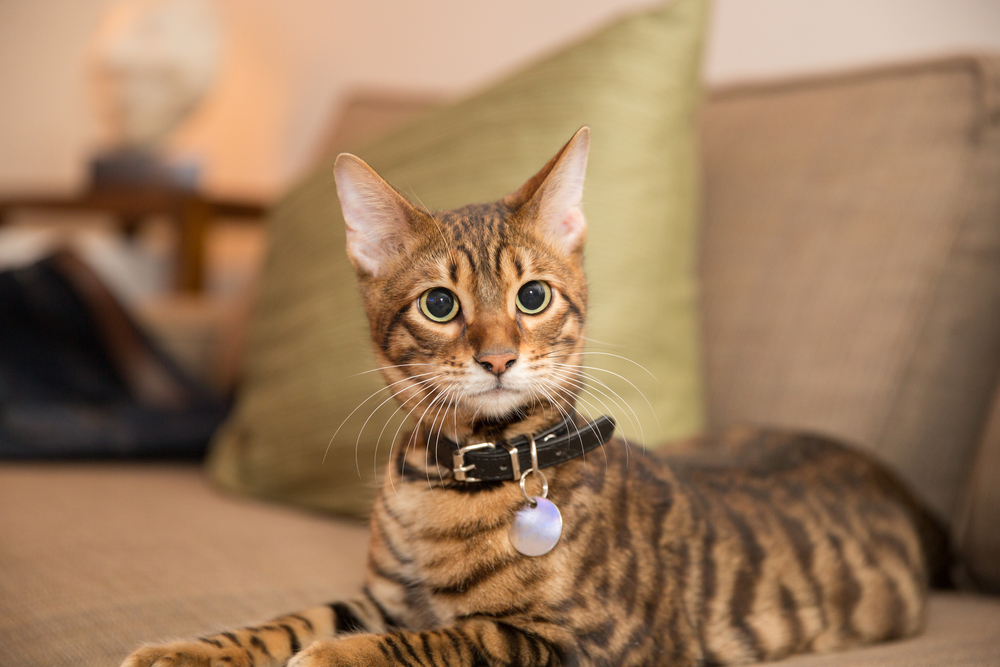


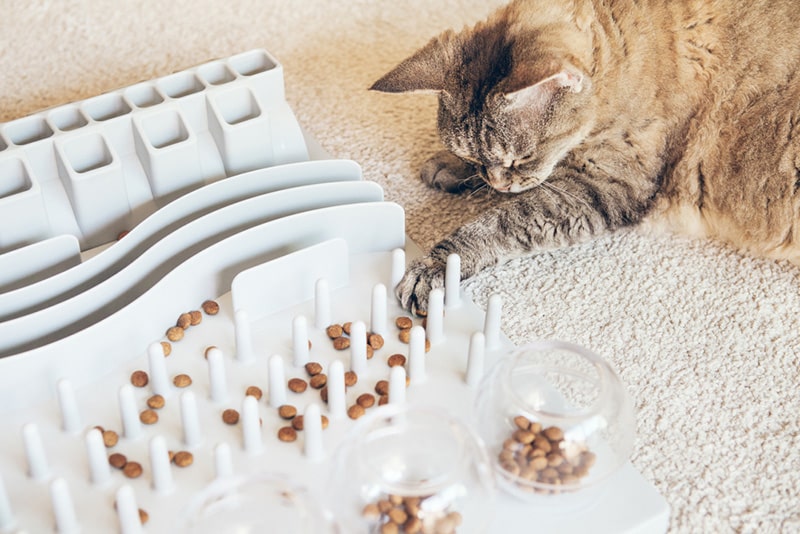
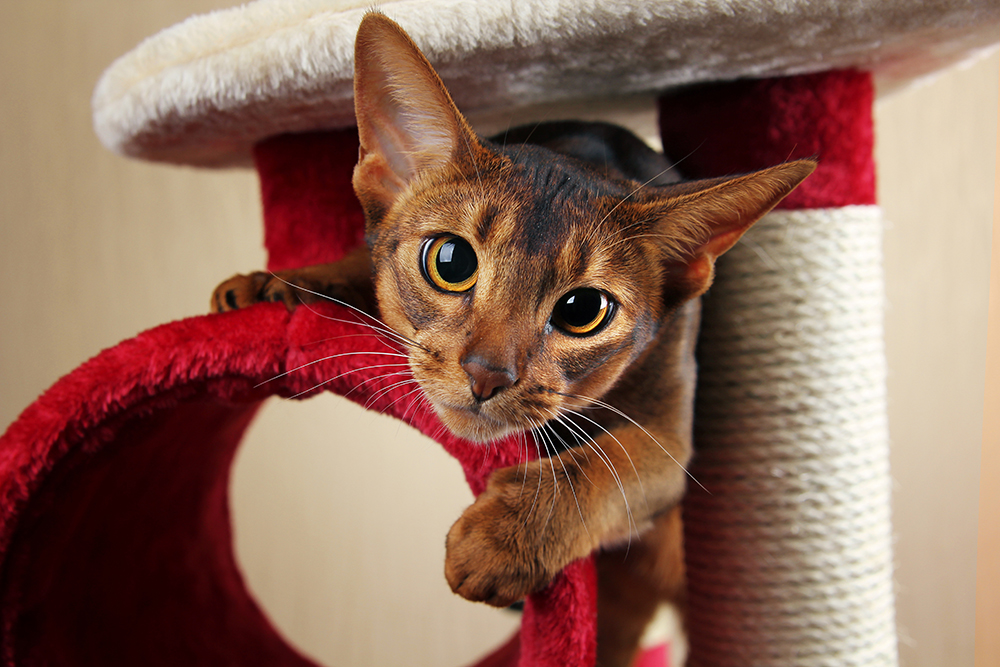
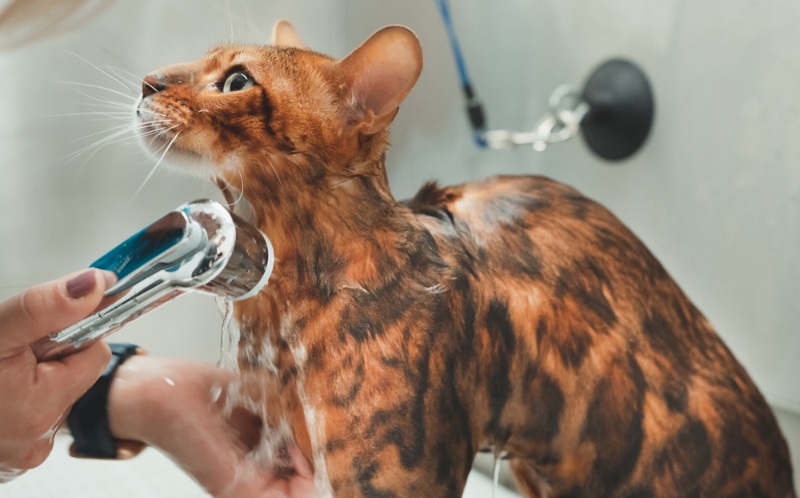





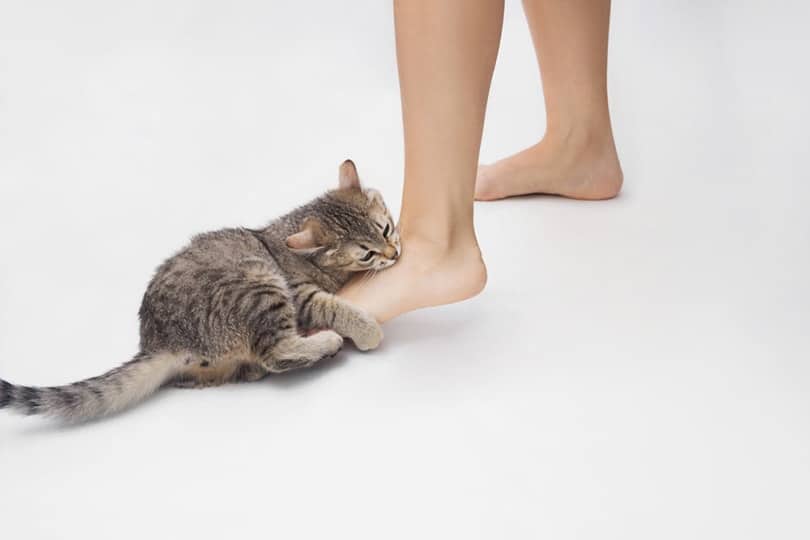
My cat scratches my mattress under the bed. I’m at my wits end any suggestions.
Thanks for reading us Kelly, we are sorry to hear that. You could try placing double-sided tape on it. It deters most cats from scratching. We hope this helps. 🙂
I have provided cat trees and plenty of places for cats to scratch and yet they still loved the material on my Kimball organ and the sofa. Solution was to use clear packing tape on the side and back top of sofa. I did try other things, but noticeable. So have found the best solution is heavy duty packing tape. Saved the sides and top back of my sofa. Not that noticeable and seems to last quite a while before needing to be replaced. Carpeted cat tree helps and my cats never did scratch my carpeted floor. But this last cat likes the tightly woven carpets that partially cover the wood floor. Luckily it doesn't destroy the carpet, so I let her have a good time doing it. Yet I have had one cat that only wanted to scratch one little scratching 3 foot scratcher. She never scratched on the carpeted cat tree or furniture. As my daughter once said, "pick your battles."
Hi Mary, thank you so much for sharing your story and tips. We are happy to read you found a viable solution. Yes, cats are funny and unique, and well, since our houses are more theirs than ours, we always need to find a way around their habits, decisions, likes, and dislikes. Living with cats… or any other creature, it is always wise to pick your battles and avoid them whenever possible. 🙂